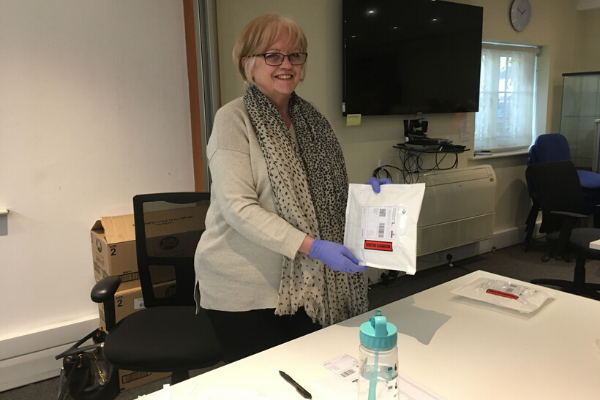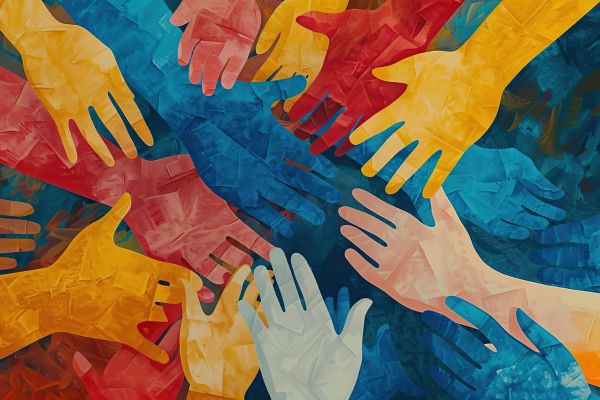Insights
INSIGHTS
All Topics
My Account
How tech is tackling domestic abuse during COVID-19
08 May 2020by Julian Blake
In the latest in our series of COVID-19 charity stories, we hear how domestic abuse charity SafeLives has taken face-to-face services online
The COVID-19 outbreak is putting huge extra pressure on charities tackling domestic abuse, because of the surge in frequency and severity of incidents under enforced lockdown, alongside an often-acute drop in resources. SafeLives is seeing exactly this: higher demand for its support and expertise at the same time as losing 35–40 per cent of its income because of coronavirus.
The Challenges of COVID-19
The charity has had to shift its support for professionals helping those experiencing domestic abuse from face to face to online, deploying a range of existing tech platforms including Zoom, Skype, WhatsApp, Teams, JoinMe and My Community to help it deliver. The charity was already using digital to drive efficiency and transformation and a digital lead had been developing tech safety and support advice. COVID-19 has forced the team to accelerate those new ways of working.
The organisation has almost entirely pivoted to immediate work on COVID-19, with staff who can’t take part in that effort furloughed to ensure financial sustainability. All remaining staff are working from home.
The charity has used multiple tools to help continue its service, including Zoom, Skype, WhatsApp, Microsoft Teams, JoinMe, and My Community.
SafeLives uses these existing technology platforms for contact with its internal team, external partners and other stakeholders. Its use of My Community is one of the key online services it provides — the SafeLives Community uses it as a platform and it has 2,000 members on there. Alongside this, the charity has upped its COVID-19 online content, with dedicated web pages and podcasts (see below).
The impact of digital
“The tech is extremely helpful,” says SafeLives chief executive Suzanne Jacob. “There isn’t a huge amount we can’t do, though as ever we are reliant on other people’s tech and availability. The main thing we can’t do is deliver training; a little of that can be done online, but primarily it’s a face-to-face function to maintain quality and social value. Plus our usual learners are fully deployed on crisis response, so many wouldn’t be available anyway.
“There is some lack of confidence amongst team members, but actually most of the tech we use is pretty instinctive and our workforce is used to it as many work remotely on a normal day.”
Advice to others
“Be imaginative,” says Jacobs, when asked for her advice to others. “Think how your work can be delivered on a ‘same but different’ basis.”
She says that mass contact has been relatively easy. Members of the SafeLives Community are using the platform more actively to seek advice from SafeLives and each other.
Building new relationships has been harder.
“We would like to be engaging closely with mental health charities at the moment, but it’s hard to build the bridges to do that,” says Jacob.
Checklist
- Use what’s readily available, free and easy for people of all digital abilities. Don’t invent something new — this is not the time for ‘let’s have an app!’
- If there are team members who are more or less confident, see if it’s possible to buddy up to share expertise and practical tips.
- Adopting digital is about more than just switching to Skype or Zoom meetings. It means new ways of thinking about, planning and delivering work, daily, weekly and longer-term, so other changes might happen or be needed as a result. This should not be done in isolation of bigger organisational thinking.
COVID-19 charity stories
Charity Digital and non-profit digital collaborative Catalyst have joined forces to share COVID-19 charity case studies - highlighting the ways non-profits are using digital tools and approaches to change the ways they work and deliver services. By sharing what works, others can learn and adapt themselves.
We’re sharing the most interesting charity digital responses to the pandemic. We’d love to hear how your charity is using digital to respond - so have created a quick questionnaire that should take no longer than 15 minutes to complete.
Share your story with us
Your experience could help other charities to begin their digital journey
More on this topic
Recommended Products
11 Mar 2025by Charity Digital
Podcast: The digital service delivery landscape in 2025
07 Mar 2025by Ioan Marc Jones
A-Z incredible fundraising ideas for charity
07 Mar 2025by Ioan Marc Jones
An A-Z glossary of service delivery terms and definitions
Our Events
Charity Digital Academy
Our courses aim, in just three hours, to enhance soft skills and hard skills, boost your knowledge of finance and artificial intelligence, and supercharge your digital capabilities. Check out some of the incredible options by clicking here.

















